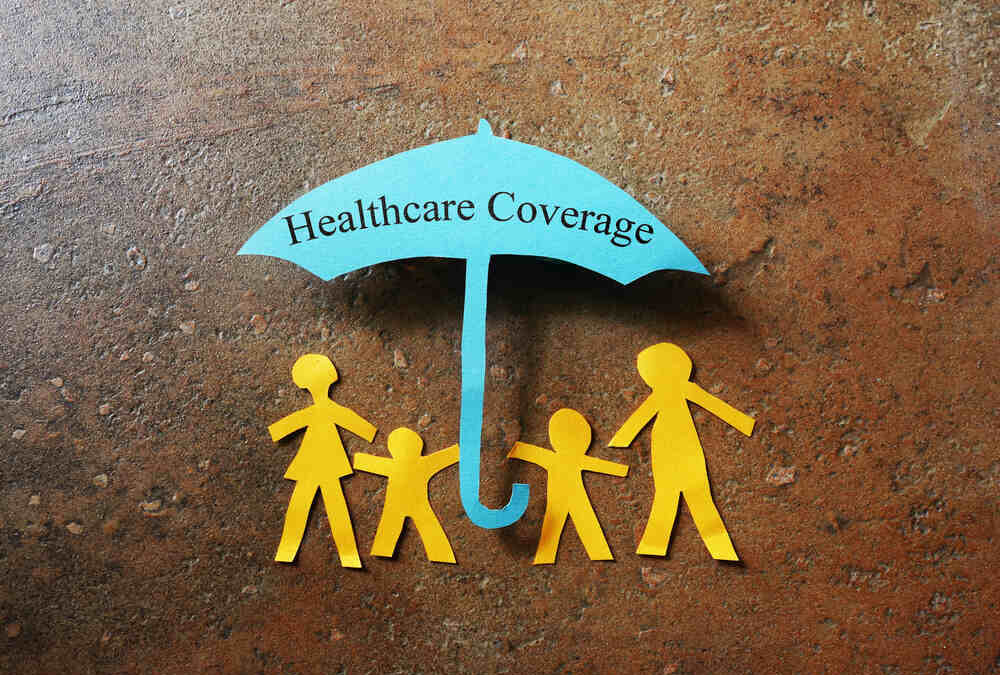The Affordable Care Act remains the law of the land when it comes to health insurance and health coverage, but the Tax Cuts and Jobs Act of 2025 made a very significant change to the law popularly known as Obamacare. While the recent Tax reform bill did not repeal the ACA, it did remove the penalty for going without health insurance.
The Individual Mandate Penalty No Longer Applies as of 2019
During 2017 and 2018 several efforts to repeal or de-fund the ACA. While these were unsuccessful, Congress did succeed in nullifying the ACA’s individual mandate penalty as part of the tax bill that was passed in late 2017.
The penalty was not repealed, but the dollar amount was reset to $0 and took effect in January 2019. What this means is that individuals who were uninsured in 2018 may still owe a penalty, unless they qualify for an exemption when they filed their tax returns in 2019.
As things stand now, however, most people who are uninsured in 2019 will no longer face a penalty when they file their tax returns in 2020. The exception being the residents of California.
In June 24, 2019, the California legislature voted to pass a health insurance individual mandate penalty. According to an article at benefits service firm Sequoia’s website
“Beginning January 1, 2020, the California Minimum Essential Coverage Individual Mandate (“individual mandate”) requires California residents to maintain minimum essential coverage or pay a penalty. Minimum essential coverage is defined under Health and Safety Code Section 1345.5, which includes employer-sponsored group health insurance policies bought through the California small or large group insurance market.”
The tax, or penalty, is $695 per adult, $347.50 per child, or 2 1/2 percent of a household’s gross income, whichever amount is greater.
In addition, all California residents must also ensure that their “applicable” spouse and dependents have health coverage. There some exemptions allowed, including for individuals with a hardship or a religious objection.
Otherwise, aside from the elimination of the individual mandate penalty, the ACA is still fully in effect, including the premium subsidies, the cost-sharing reductions or subsidies, Medicaid expansion, the employer mandate, protections for people with pre-existing conditions, etc.
What’s Going to Happen With Health Insurance Premiums
While 2018 saw an overall increase in most premiums over the previous year, 2019 saw both increases and decreases. Detailing the variables and factors that affect premiums is beyond the scope of this article, but there are two major categories of health insurance products to consider.
First, there is the health insurance that people buy in the individual market. This can be either in the health insurance exchange or outside the exchange, that is, insurance purchased directly from a health insurance company. Secondly, there is health insurance coverage that individuals are offered from employers, as well as Medicare, Medicaid, and the Children’s Health Insurance Program.
So, while some premiums go up and others go down, subsidies also vary, which leads to a confusing mix of premium costs, especially for those purchasing their coverage through state-run health exchanges, such as Covered California.
In addition, there are fewer than 16 million people enrolled in individual market health insurance in the United States. That amounts to less than 5 percent of the U.S. population. This means that the vast majority of Americans get their health insurance either from an employer or from a government-run program such as Medicare or the VA, for example.
A lengthy article at VerywellHealth summed it up by noting,
“…[T]here are numerous factors that are affecting individual market health insurance premiums for 2019. Some of them are pushing the rates higher, while others are pushing rates lower than they would otherwise have been.
In many states, you have factors on both sides working simultaneously. The overall average rate change is a slight increase for 2019, but there’s significant state-by-state variation.
And although average benchmark premiums are decreasing slightly, that just means that premium subsidies will be slightly smaller in 2019. It doesn’t mean that your premiums will be smaller in 2019.”
And what about premiums for 2020?
According to information from the Healthcare.gov website the 2020 Open Enrollment Period runs from November 1, 2019 to December 15, 2019. Health insurance lans sold during Open Enrollment will start January 1, 2020
On April 18, 2019, the U.S. Department of Health and Human Services (HHS) finalized the Notice of Benefit and Payment Parameters for 2020 (NBPP). This new rule will govern the health insurance marketplaces and set the framework for insurance companies to propose plans and premium rates for 2020.
An article at FamiliesUSA.org points out that,
“Until now, HHS adjusted costs annually based on premium increases in employer-sponsored insurance, which fluctuate less than the individual market. Under the new rule, adjustments will be based on premium increases in both the individual and the employer-sponsored market since 2013, before the Affordable Care Act’s major reforms took effect. By HHS’s own estimates, this will result in 70,000 fewer people enrolling in comprehensive health insurance each year, and it will increase premiums by an additional 1% in the coming year. The formula change will increase premiums for a family of four with an income of $80,000 by $204, as the Center on Budget and Policy Priorities explains.”
Why Short-Term Health Plans Still Don’t Cut It in 2025
Let’s clear this up—short-term health insurance plans might look affordable, but they’re not a great long-term strategy. In 2025, these plans still don’t cover pre-existing conditions, prescription drugs, or maternity care, and they can drop you after a claim. Think of them more like a band-aid, not real coverage. And while they’re still legal at the federal level, California banned short-term health plans entirely. So if you live in the Golden State, don’t waste time shopping for something that doesn’t exist here. You’re better off sticking with ACA-compliant coverage through Covered California or Medi-Cal if you qualify.
California’s New Health Subsidies Could Save Middle-Income Families Big
Here’s something that’s flown under the radar—California now offers state-based premium subsidies in addition to federal ones. And in 2025, they’ve expanded those even further for middle-income families earning up to 600% of the federal poverty level. That’s roughly $180,000/year for a family of four. Before this, those folks didn’t qualify for any help. So now, a lot of people who thought they earned “too much” are getting $100s—sometimes $1000s—off their monthly premiums. Don’t leave that money on the table—go back and check your eligibility through Covered California. Even if you’ve been denied subsidies in the past, this year could surprise you.
Special Enrollment Periods (SEPs) You Didn’t Know Existed
Most people think they’re locked out of health insurance until open enrollment. But in 2025, there are more ways to qualify for a Special Enrollment Period than ever before. Sure, losing a job or having a baby still count—but did you know you can now enroll mid-year if you move to a new ZIP code, gain citizenship, or even leave a COBRA plan early? Covered California also has a new rule: if you’re misinformed or didn’t get proper help enrolling, you may qualify for a retroactive SEP. Bottom line—don’t assume you’re stuck uninsured. There’s often a loophole, especially with how complex the system’s gotten.
Why Having Health Insurance Coverage Still Matters
Even though premiums may (or may not!) go up next year, or that not having coverage will not result in a costly fee, there are still several very good reasons to have (and keep) sufficient healthcare coverage.
According to an article at CreditKarma.com,
“Starting Jan. 1, 2019, Americans who don’t have health insurance won’t be subject to a penalty. But not having coverage means you will face all the risks that come with being uninsured.
Without health insurance, a single illness could cause financial devastation. In fact, a study from the New England Journal of Medicine found rates of bankruptcy rise “sharply” following a hospital admission. This is unsurprising when the average cost of a three-day hospital stay is about $30,000.
Money troubles aren’t even the worst possible outcome of being uninsured. A 2009 study from the American Journal of Public Health found that close to 45,000 deaths each year in the United States are linked to a lack of health insurance coverage.
Not having health insurance could cost you more in the long run than paying insurance premiums would.
Even though the penalty for going without health insurance has been eliminated, the potential cost of being uninsured can far exceed any monthly premiums or average out-of-pocket costs. It’s still a smart move to seek out the guidance of a good agent and make a wise health insurance plan choice.




